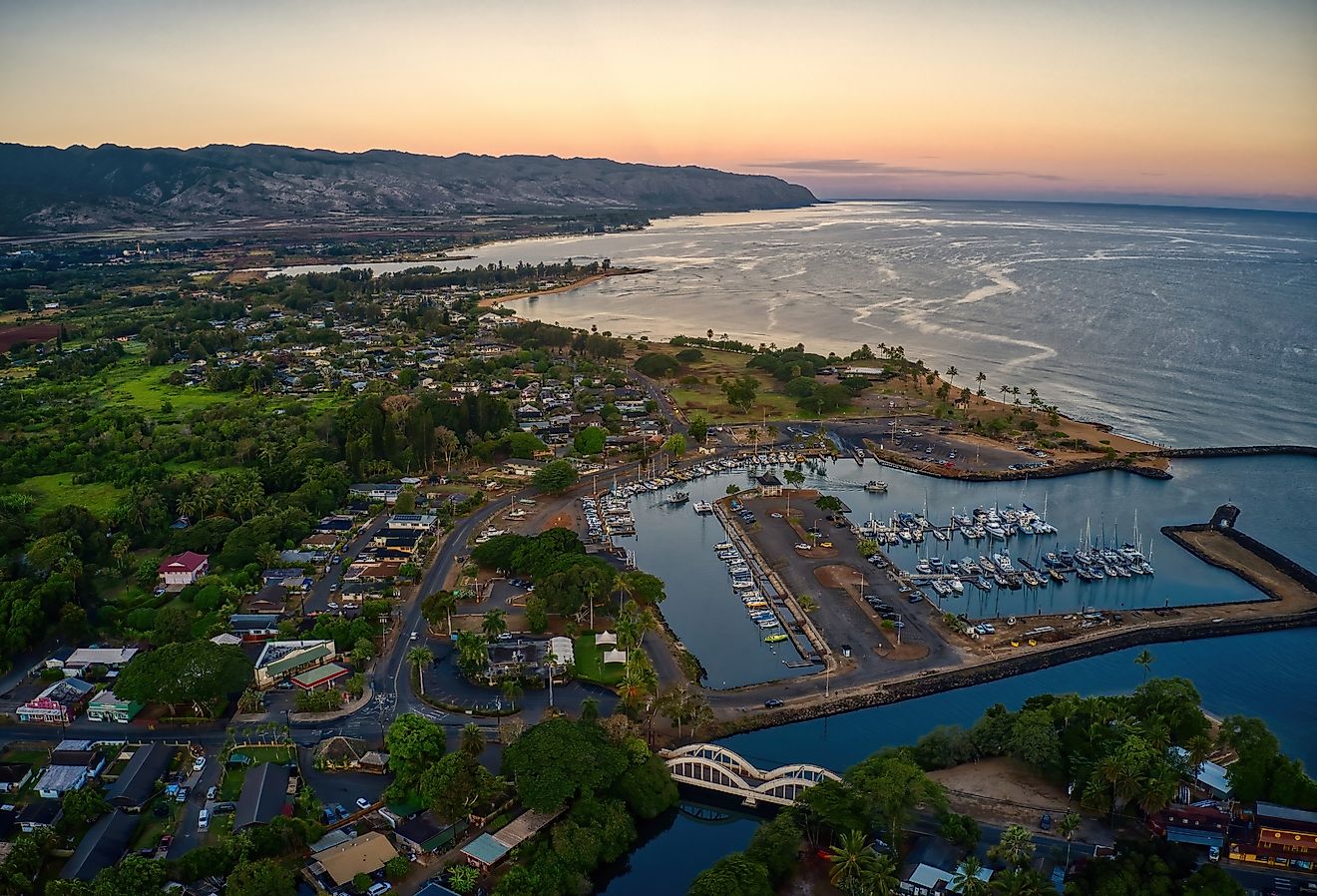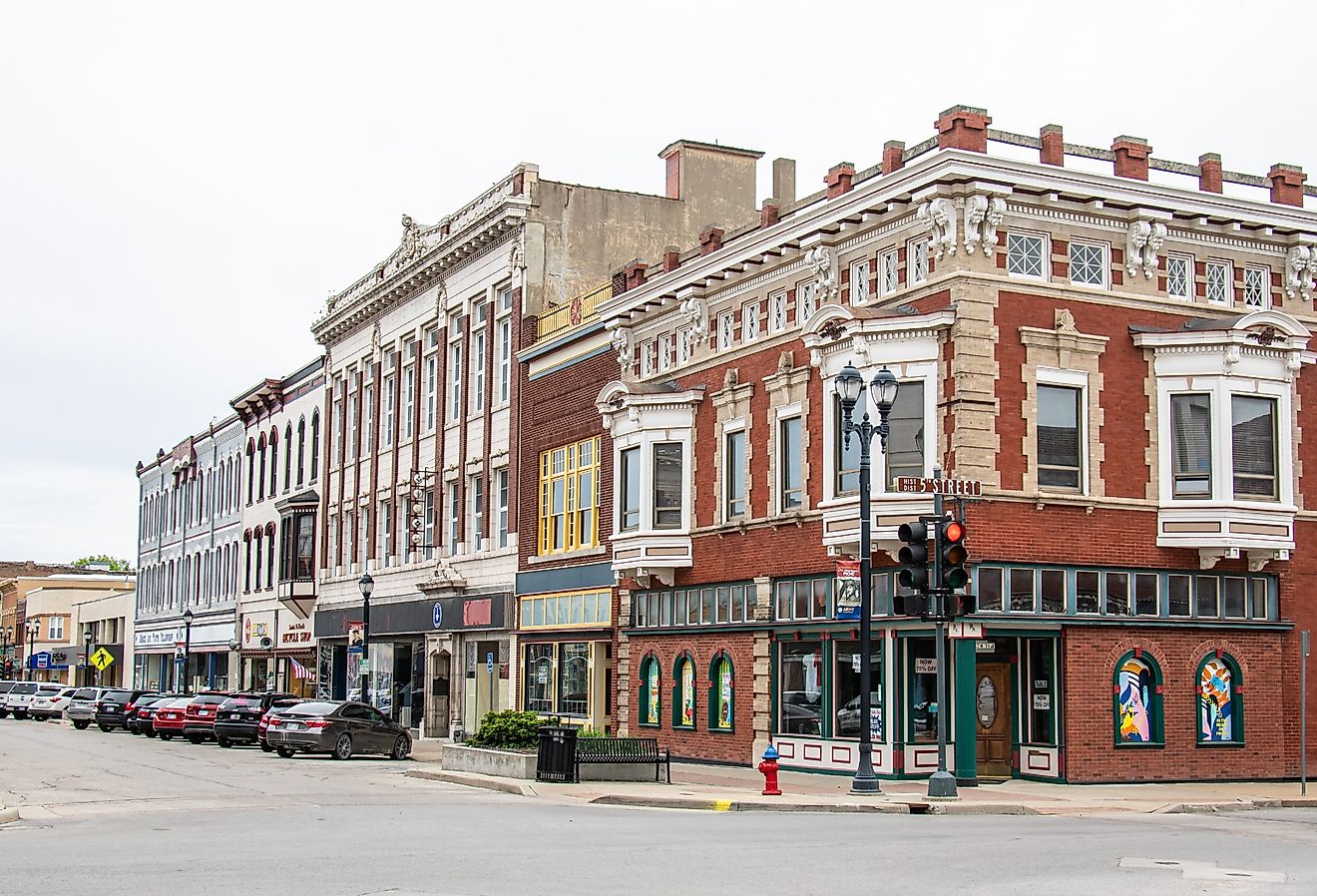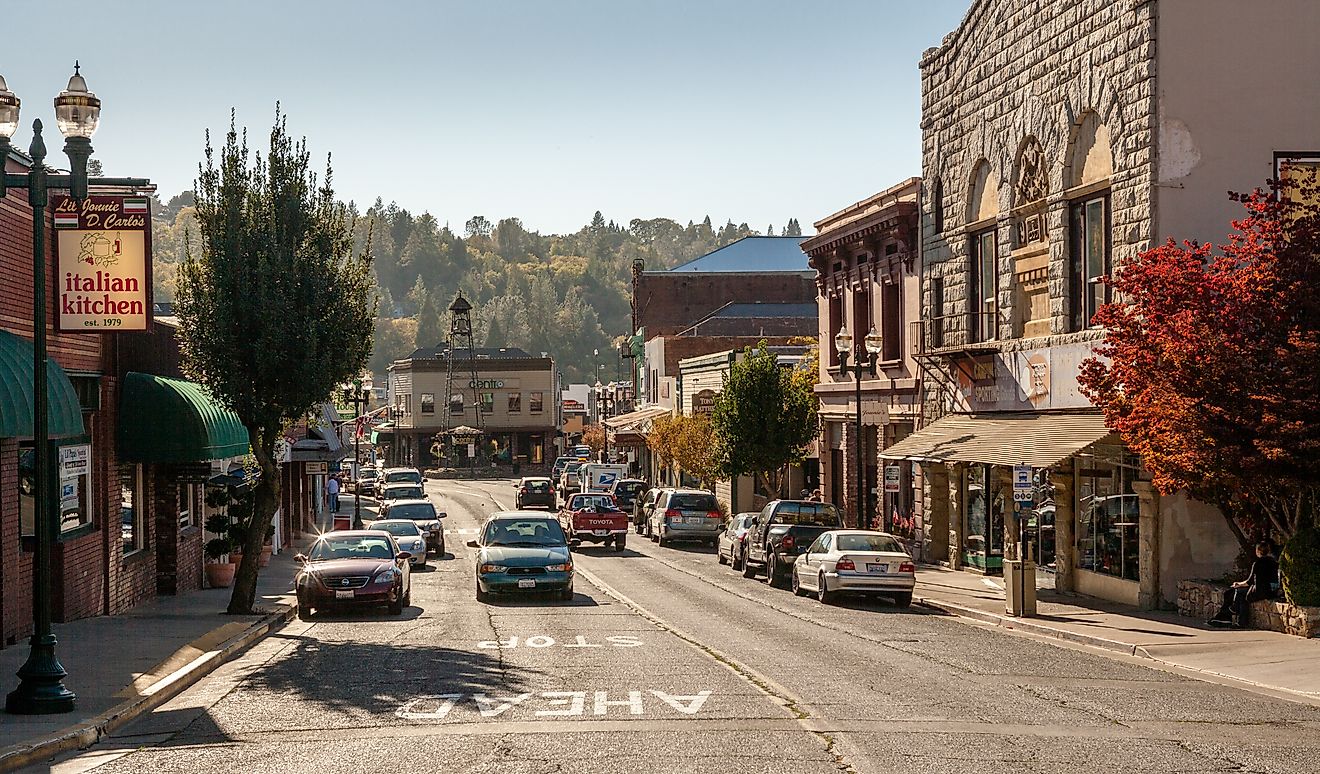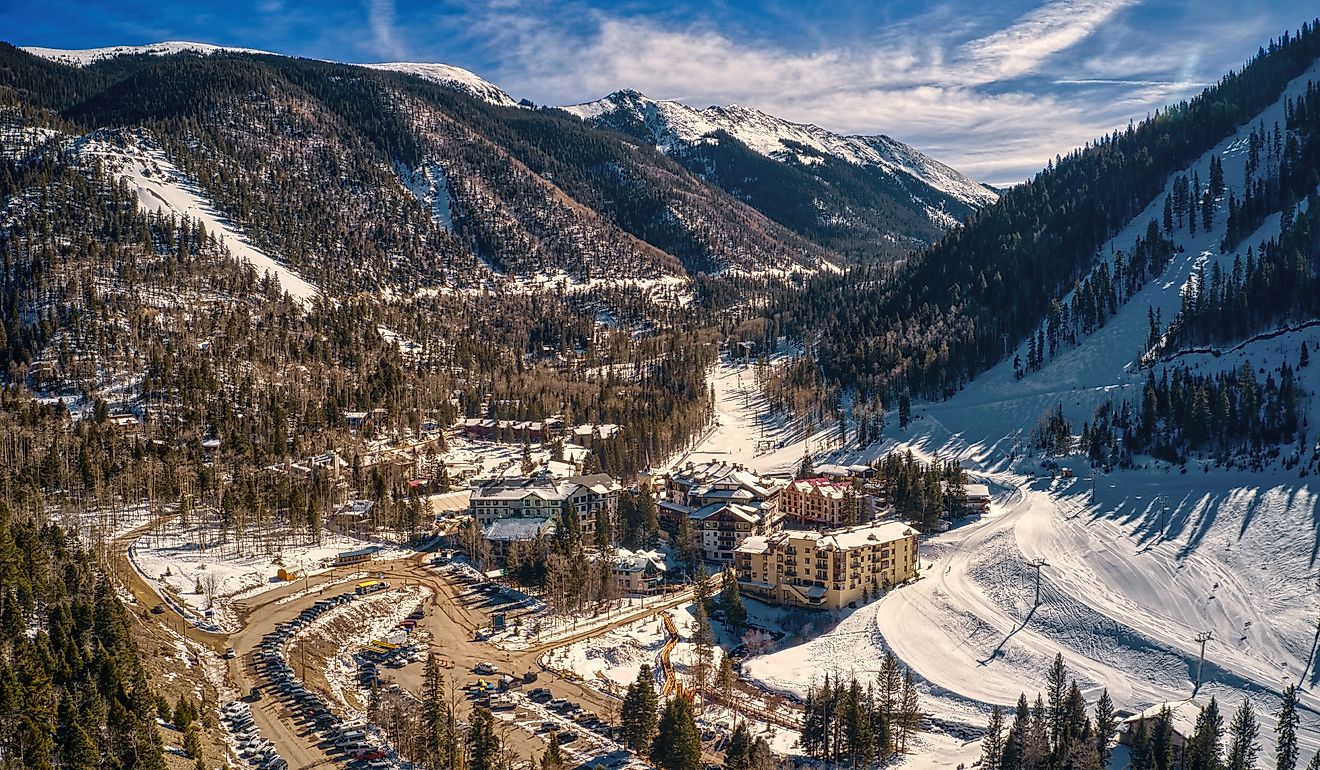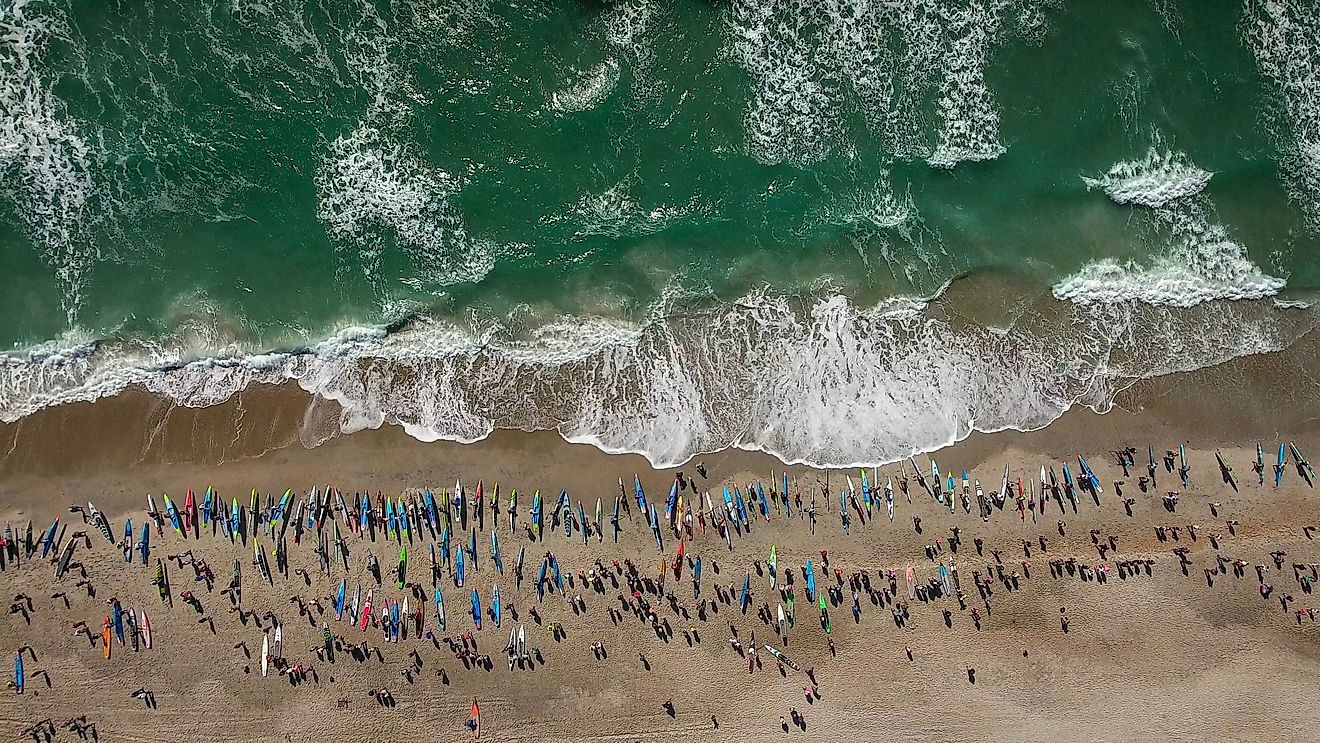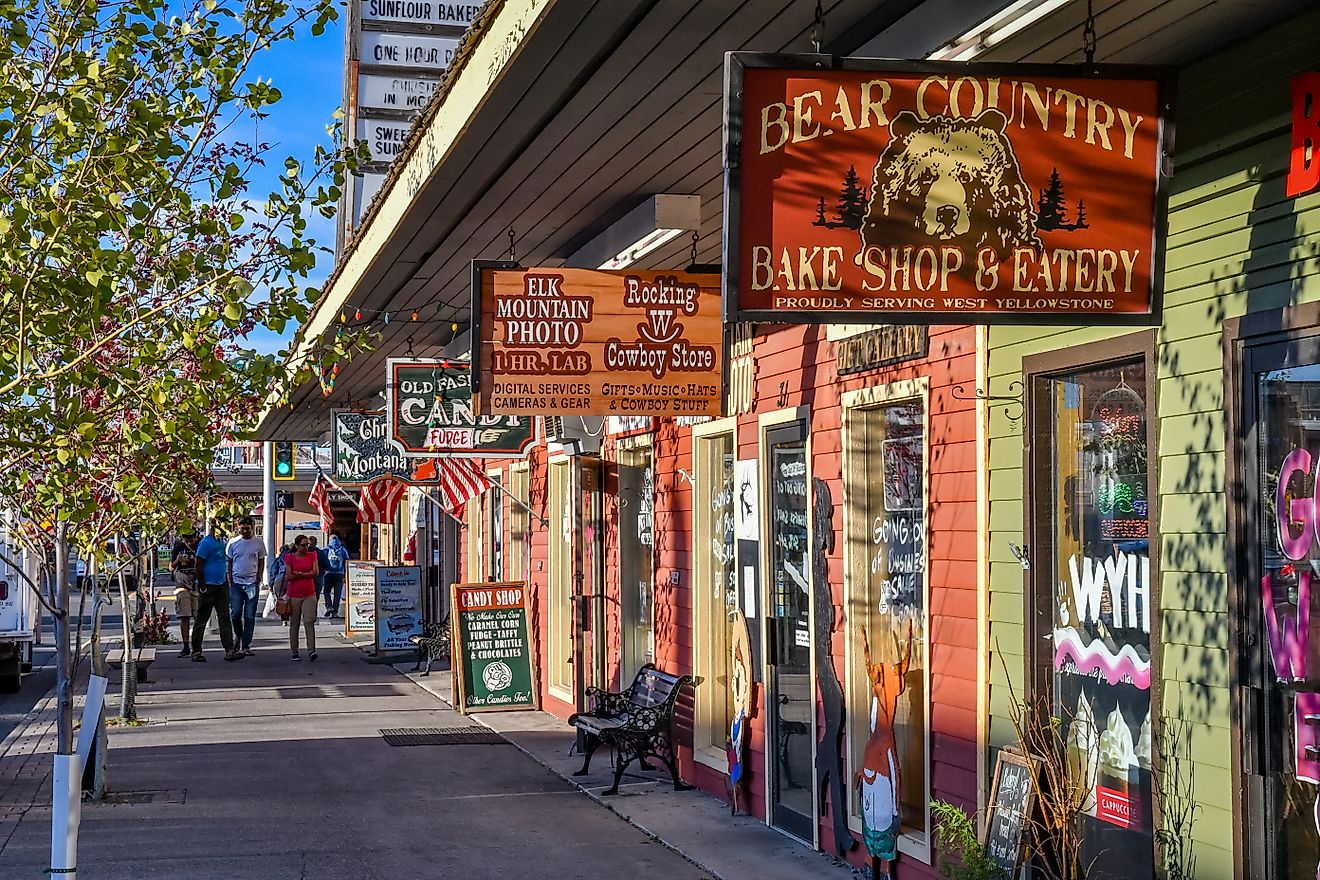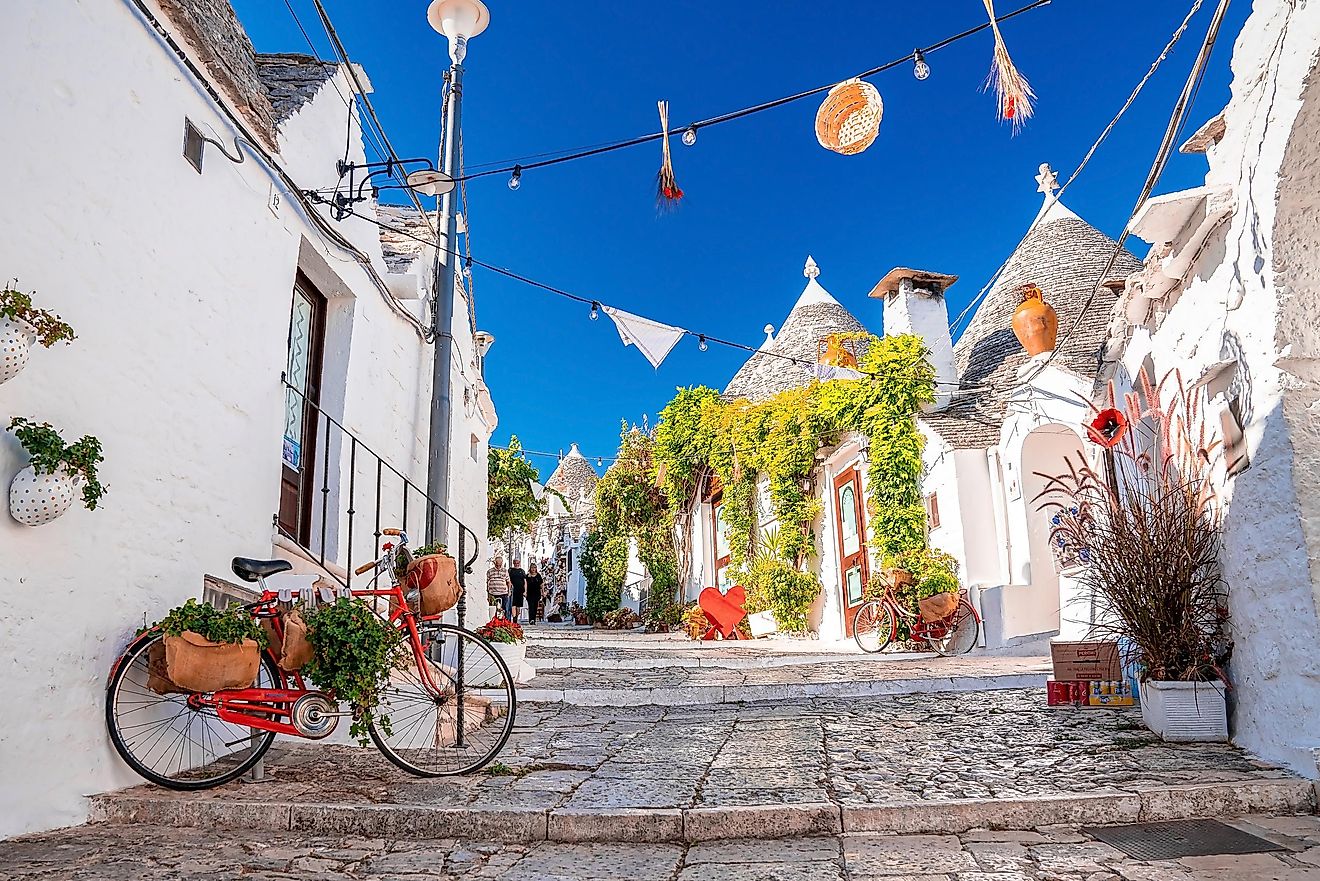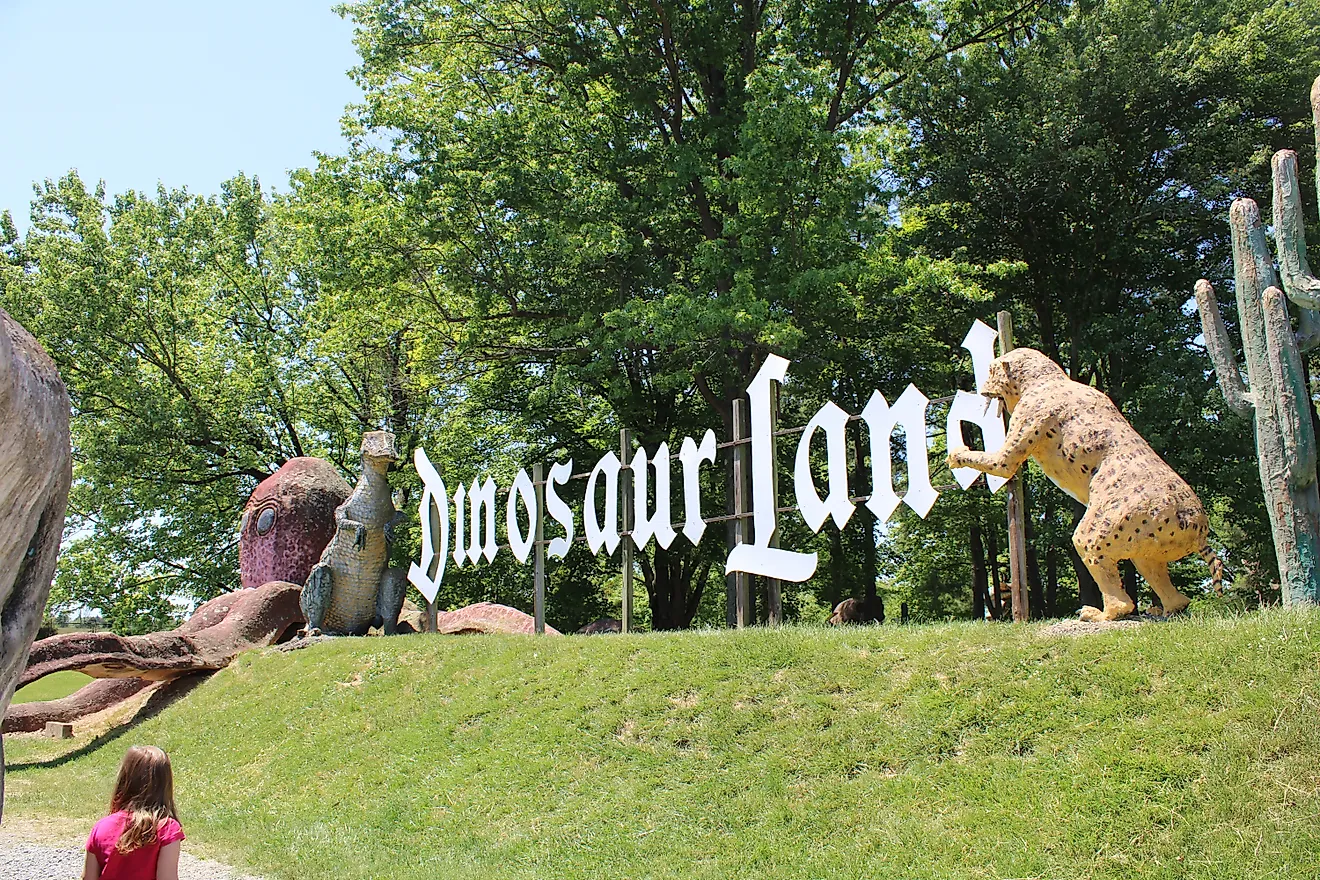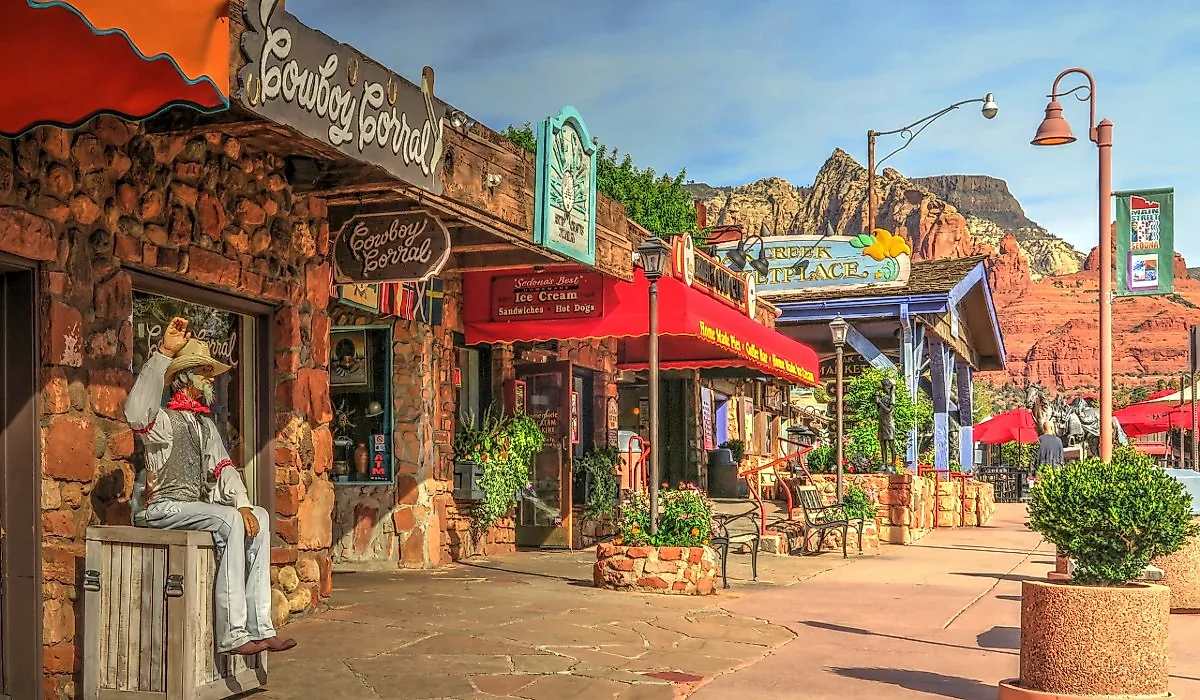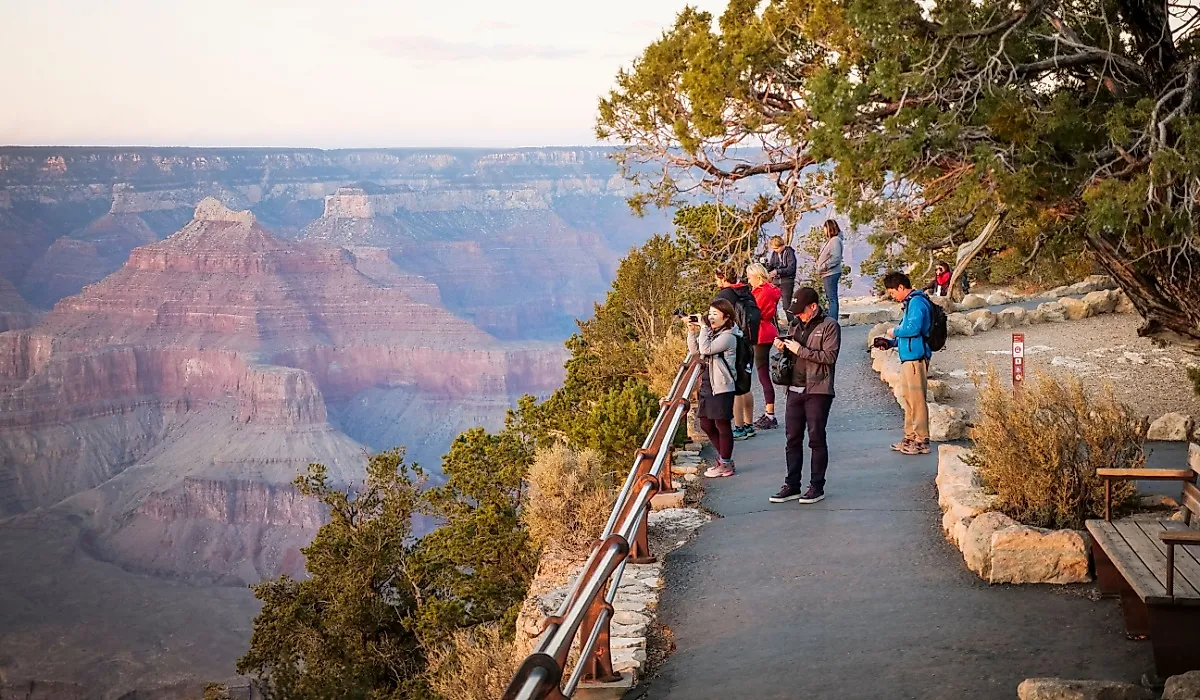
9 Amazing Day Trips to Take in the Western US
The American West conjures notions of freedom and possibility. Once defined by undeveloped lands and untapped wells, the Pacific side of the Mississippi now connotes mountain playgrounds, open roads, and breathtaking desertscapes. Unsurprisingly, scores of beloved national parks can be found in this half of the U.S. - many of which, in conjunction with major cities and memorable small towns, we'll visit today. So if you've got the day off work and a tank of gas to burn, then set your sights on one of these nine amazing road trips in the Western United States.
Los Angeles to Joshua Tree National Park
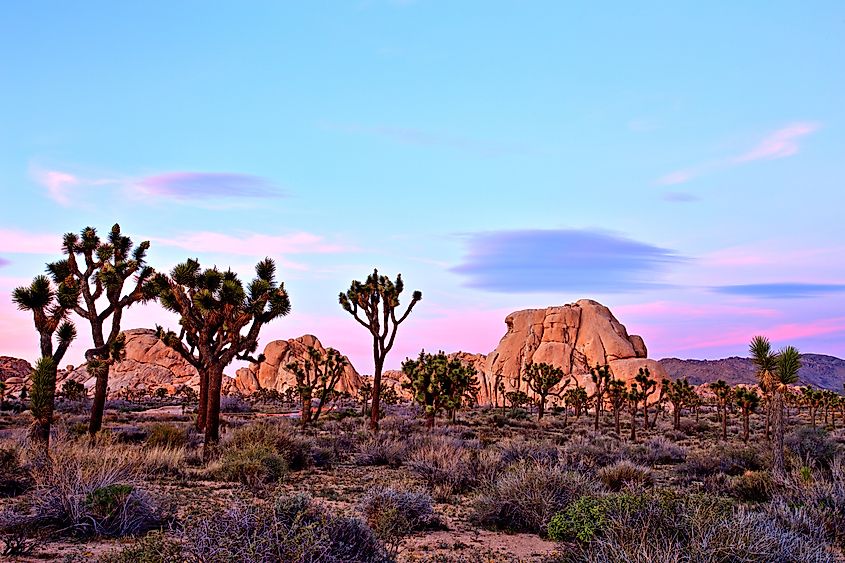
Some people fly into LAX to indulge in the lights and the glamour of California's famed City of Angels. Others immediately head east, to embrace the dark skies and desert solitude of Joshua Tree National Park. The latter is the focus of this worthwhile day-trip. Taking the San Bernardino Freeway (Interstate 10) alongside the San Bernardino Mountains, we are presented with a fork in the road. Continuing on I-10 as it trends southeast into Coachella Valley will eventually lead motorists to the southern entrance of Joshua Tree, characterized by the lower elevation Colorado Desert. A fine choice, indeed, but if pressed for time, I recommend taking the 29 Palms Highway (SR 62) north and then east, where you'll enter JT's higher elevation, Mojave Desert portion.
Pulling into the town of Joshua Tree, you'll have the chance to check out the park's Visitor Center, the weathered and eccentric businesses of this equal parts hippie-haven, equal parts biker hangout, and to access Black Rock Canyon Campground. Even if you don't have the luxury of extending your day-trip into an overnight affair, you can still partake in the campground's Hi-View Trail - a mile-and-a-half loop past many of the marquee trees to the top of a sweeping viewpoint. Alternatively, you may continue on to Indian Cove Nature Campground, where uncanny rock formations carve out private sites and beckon rock climbers (and, if you get to stay the night, where the stars of this International Dark Sky Park shine through all the greater).
San Jose to Pinnacles National Park
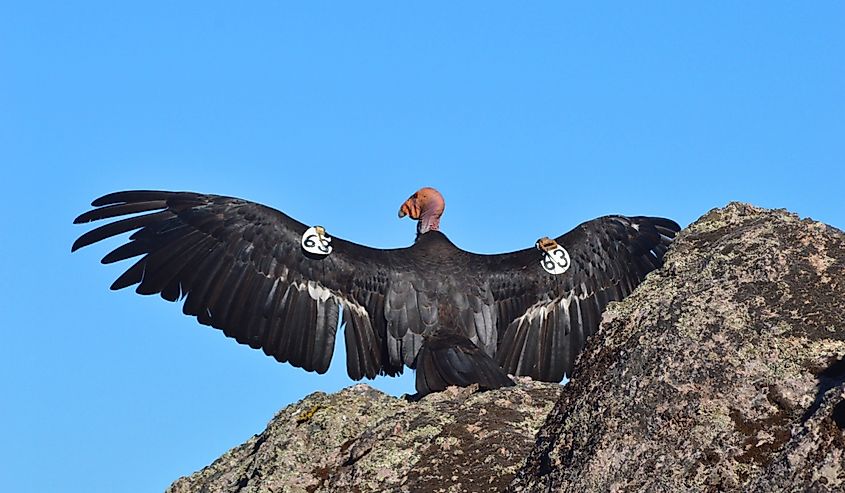
Another of California's magical national parks can be easily accessed from San Jose. Pinnacles National Park (i.e., one of California's newest additions to the NPS) sits a mere 80 miles (or roughly an hour and a half's drive) from the San Jose Mineta International Airport via the aptly-named Airline Highway (SR 25). Note that because there is not currently a road connecting the park's hemispheres, we will be focusing our attention on the attractions of the east entrance. Again, I can't help but tempt prospective travelers into an overnight affair, in which case, the Pinnacles Campground, with its amphitheatre, swimming pool, camp store, and well-compartmentalized sites, has your back. But otherwise, I think the most effective way to get an overview of the upheaved, yet strangely tranquil landscape, is to continue to the parking lot for the Old Pinnacles Trail. This 5.4-mile, out-and-back hike warms up the legs with a semi-shaded forest stroll before going high onto the sun-scorched Balcony Cliffs (so ample water is required), and deep into the Balconies Cave (meaning a headlamp is also required).
Las Cruces to White Sands National Park
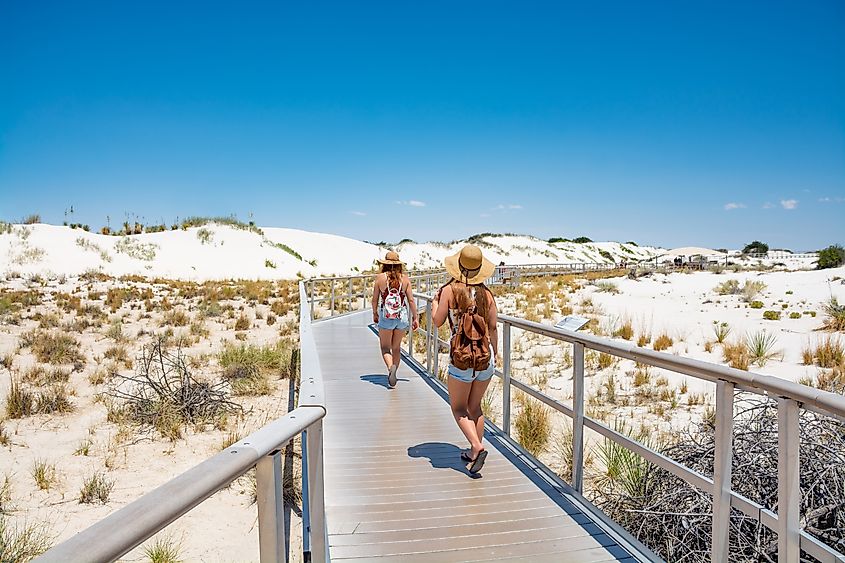
Keeping the national park train chugging, New Mexico's White Sands National Park is one of the most visually arresting landscapes in the Southern United States. To access this, the world's largest gypsum dunefield, it's best to base out of Las Cruces - a mid-sized city on the northern fringe of the Chihuahuan Desert. From its namesake international airport, it is just over a 50-mile drive to the park's Visitor Center and White Sands Trading Company, where saucer-sleds can be rented (trust me, you'll want to capitalize or you'll be envious watching your peers zip down the steep dunes). From the Visitor Center, there is simply one road in and out of the park: Dune Drive. Take it slow, as you'll be navigating packed sand while regularly approaching pit-stop attractions. Highlights include the Dune Life Nature Trail, the Interdune Boardwalk, and the expansive Alkali Flat Trail - where the full brunt of this massive dunefield is framed by the San Andres Mountains. Come during the day to watch the preternatural sands shimmer in the sun, and stay for the post-sunset pastel skies.
Albuquerque to Taos
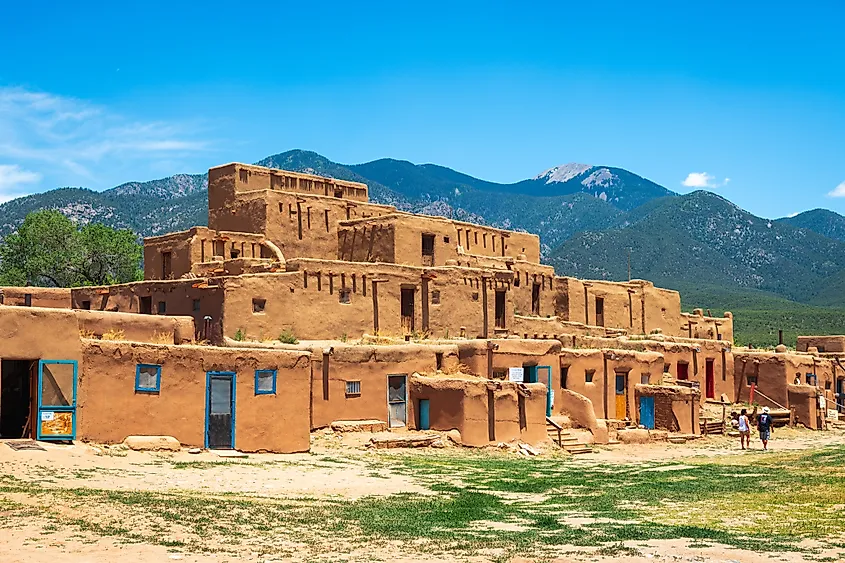
Another diurnal New Mexico adventure can be kicked off from Albuquerque. From the largest city of The Land of Enchantment, we'll head northeast, through the state capital of Santa Fe, and on to the enclave of Taos - one of the most captivating small towns in the Rockies (you heard me right). In the Sangre de Cristo Mountains (i.e., the southernmost offshoot of the iconic continental range), Taos delivers all the outdoor recreation possibilities that you'd expect from the more commonly associated Rocky Mountain states (such as Colorado or Montana), but with that delightful high desert aesthetic mixed in. When you're done skiing, mountain biking, or hiking around Taos Ski Valley, or rafting the Rio Grande River (or perhaps floating above it in a hot air balloon). The Taos Pueblo UNESCO World Heritage Site is worth a stop for its living history and traditional craftsmanship. Along with offering a glimpse 1,000 years into the past, this arrangement of Indigenous adobes is still home to hundreds of permanent residents, and acts as a place of commerce (i.e., traditional crafts and food concessions) for tourists.
Denver to Rocky Mountain National Park
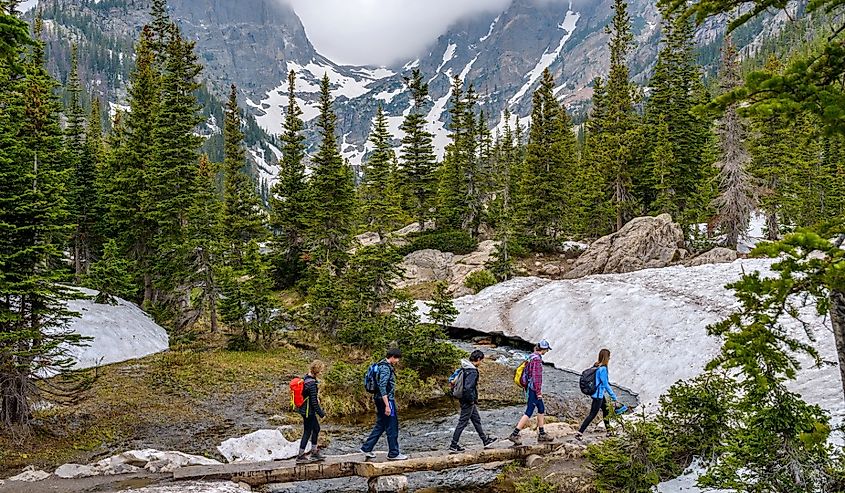
Speaking of the Rocky Mountains, let's head north into the heart of this world-famous range for a truly quintessential day-trip. Beginning in the capital of Colorado, at the Denver International Airport (the largest airport by area in the Western Hemisphere, mind you), then west for about an hour until you reach the unassuming city of Black Hawk. This marks the southern terminus of the Peak to Peak Highway - a 55-mile northbound journey along the Front Range and Continental Divide and the oldest scenic byway in the state.
Having now arrived in Estes Park, you can switch over to the westbound Trail Ridge Road - a 48-mile All-American Road and the highest continuously paved road in the United States. This high-altitude route rolls right through Rocky Mountain National Park, passing multiple panoramic overlooks, the Alpine Visitor Center, and the Holzwarth Historic Site before reaching the southwestern terminus of Grand Lake (Colorado's largest, deepest, and oldest natural lake). From Grand Lake, it's a crisp 100 miles back to downtown Denver for an epic round-trip total of about 260 miles, give or take some side quests.
Fairbanks to Denali
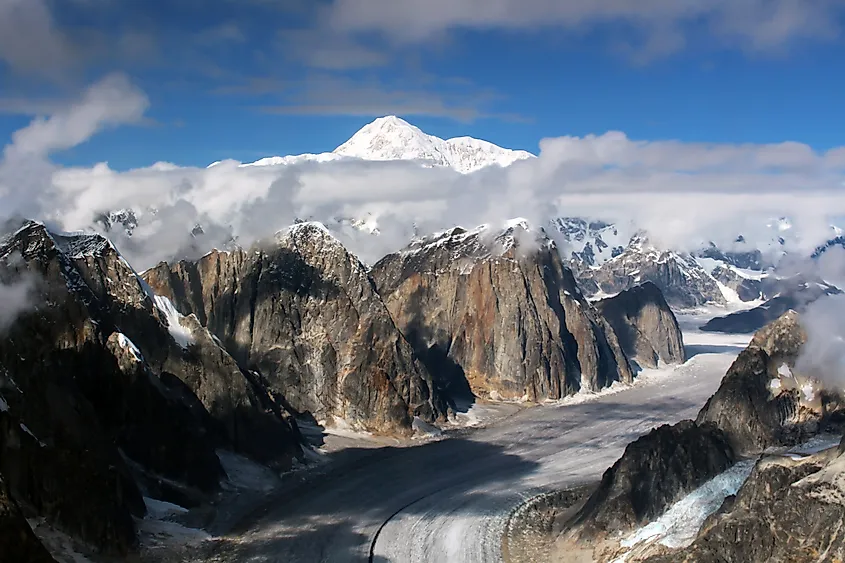
Delving deeper still into the giants of the Western United States, let's set our sights on Alaska - home to the tallest mountain in North America. Though its name keeps changing, the 20,310-foot Mount McKinley, no wait, Denali, no wait…McKinley again remains steadfast as the centerpiece of Denali National Park and Preserve and one of the world's Seven Summits. Alaska likes to keep its national parks especially wild, but Denali does have one road. The first 15 miles are paved and open to everyone, and then buses (for either strict transport or narrated tours) are available to take tourists upwards of 77 more miles into the incomparable Alaska Range. On a cloudless day, Denali can be seen starting at Mile-9, but the further you go, the better it gets (and the more wildlife is likely to emerge). From Fairbanks International Airport, you're looking at 120 miles/two hours to the start of Denali's Park Road.
Phoenix to Williams & The Grand Canyon
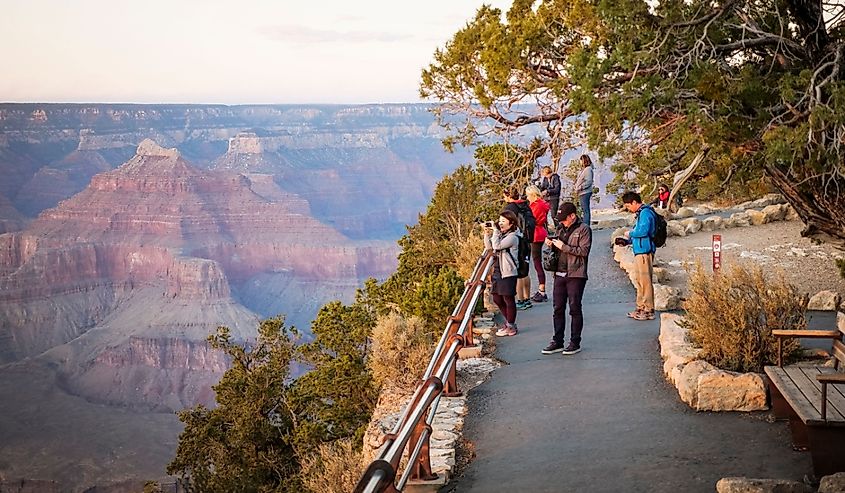
Now that we've seen America's highest mountain, I think it's only fitting that we venture to one of the deepest, but certainly the most iconic canyons in not just the country, but the entire world. Northern Arizona's Grand Canyon is mandatory bucket-list material. Two hundred seventy-eight miles long, 10 miles wide (on average), one mile deep (on average), and striated with hundreds of millions of years' worth of sediment, it's tough to avoid cliches when standing atop the Grand Canyon. But reaching this inspiring precipice requires a bit of a two-part day trip - a weekend if you will! Step one is to arrive in Phoenix (i.e. the closest international airport), and make the 175-mile drive up to Williams, Arizona, with optional stopovers in Sedona and Flagstaff. This historic Route-66 town boasts six blocks of early-to-mid 20th-century nostalgia, but it is also the start of the Grand Canyon Railway (enter step 2). This two-hour scenic train ride takes passengers to Grand Canyon Village in Grand Canyon National Park, where some of the South Rim's best viewpoints and trails can be immediately accessed.
Bozeman to Yellowstone
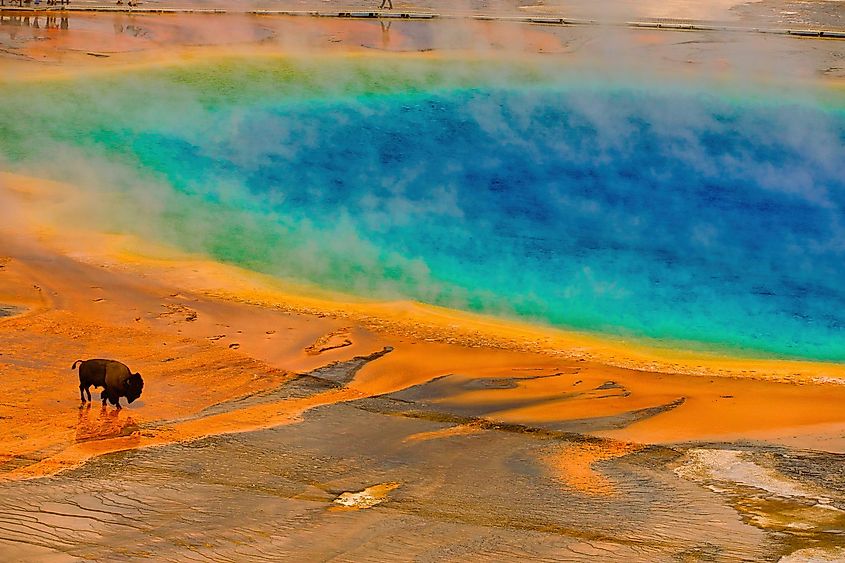
Established in 1872, America's first national park is also widely considered to be the oldest national park on the planet. Yellowstone not only shattered the glass ceiling of conservation, but continues to draw nearly five million annual visitors, thanks to its robust populations of wildlife (i.e., the largest concentration of mammals in the lower 48), its geothermal wonders (including roughly half of the world's active geysers), and a Grand Canyon of its own (this one has waterfalls).
The only kicker is, at 2.2 million acres (predominantly across Wyoming, but also a sliver of Montana and Idaho), Yellowstone National Park is simply too much ground for a single excursion to cover. Thankfully, a trip down from Bozeman, Montana (i.e., the closest major hub) can check off a couple of the park's most recognizable attractions in a day. From the Bozeman Yellowstone International Airport, the shortest route (~115 miles) to Old Faithful and the Grand Prismatic Spring is through the West Entrance via West Yellowstone (imagine that). Alternatively, you can enter through the park's North Entrance, which adds close to 25 miles but includes Mammoth Hot Springs and the Norris Geyser. Of course, there is always the option to connect another round trip!
Reno to Lake Tahoe
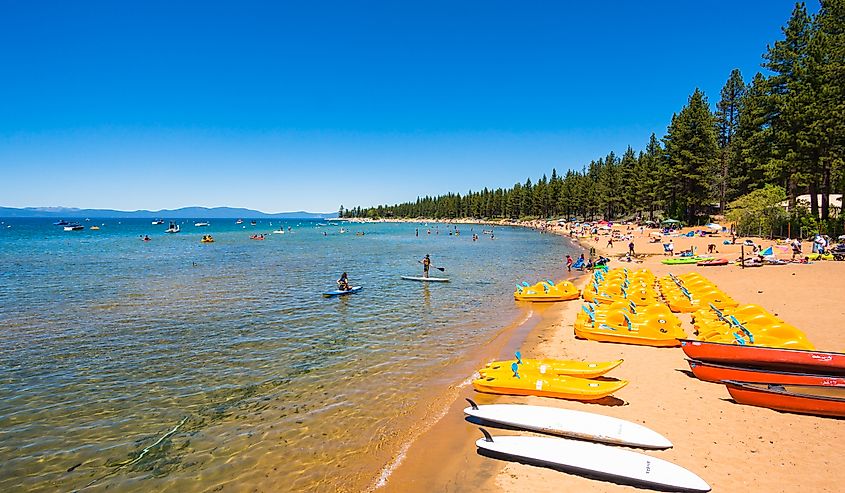
Ending back (almost) where we began our tour, Lake Tahoe is one of the premier destinations of the Western United States. The largest alpine lake in North America (not to mention one of the continent's most scenic and recreational) predominantly belongs to northeastern California, but also dips its eastern flank into northwestern Nevada. So while Sacramento acts as a suitable starting point, it is actually Reno, Nevada, that provides the closest point of connection. From the Reno-Tahoe International Airport, it is a mere 37-mile drive to Incline Village - the first of many shoreline resort towns to choose from. The Crystal Bay community, with its collection of shops and eateries, welcomes day-trippers, but given its country-club-like atmosphere, it might be best to consider other nearby destinations for a more comprehensive Lake Tahoe experience. Scooting south to Sand Harbor State Park (still within Nevada) opens the door to a public swimming beach, as well as paddling and boating adventures. Conversely, curving west around the Tahoe's north shore and down into Tahoe City brings California's litany of ski resorts into play. So, depending on the season and the collective mood of your passengers, this gem of the Sierra Nevada can wear whatever hat is needed.
Final Takeaways and Next Moves
What other region can claim landmarks as grand and varied as the Grand Canyon, the Rockies, Yellowstone, Tahoe, and Denali? The Western United States holds an unmatched blend of scale, history, and adventure; each landscape telling its own story. These nine-day trips dive straight into that vastness, offering a taste of the region’s most iconic places while leaving plenty of open road for future journeys.
